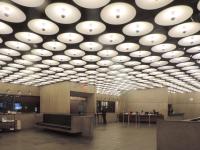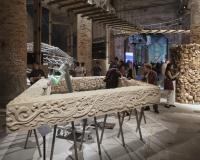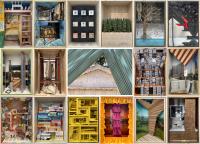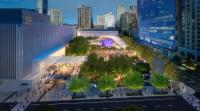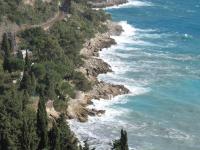Am Steinbruch
Renon, Italy
The fossilized vineyard | noa* (network of architecture) established, starting from the place – the quarry / Renon, a design concept, which implements the stone wall in the same way as it is used in the vineyards - as a supporting element.
"Architecture on this particular place has to meet nature on the most natural way..." (Arch. Lukas Rungger)
The Villa “Am Steinbruch”, a private house hosting two families, is established in the outskirts of the village of Oberbozen / Soprabolzano facing the great mountain panorama of the Dolomites. The place is a former quarry, which was the starting point in the development of the concept.
The lower parts of the high plateau of the Ritten / Renon area are lined with vineyards, which grow at the steep hillsides; the different rows are supported by dry stone walls, which form elements of the cultural landscape. noa* (network of architecture) implements the stone wall in the same way as it is used in the vineyards - as a supporting element. In doing so the intermediation with the local tradition and the accordance with the omnipresent nature was always crucial to the conceptual approach.
Architecture out of stone
The aim was to implement the architecture into the surrounding in the most natural way; therefore it was important to underline and reinforce local building traditions. The natural stone wall forms the basis of the architecture and softly melts into the landscape. Two simple houses with pitched roofs and covered all over with shingles sit on the stone wall and are looking towards the most impressive mountains scenery. The orientation of the building volumes was chosen carefully in order to view the Schlern and the Rosengarten as the central elements. The front facades are fully glazed and allow the interior to totally open up to the landscape.
The lower parts of the building, the spaces behind the stone wall host the more private sleeping rooms and bathrooms; that part of the building is embedded in the hillside situation in order to become one with the landscape. Also the window openings were chosen to create a more intimate space. The more public areas such as the living and dining area are placed on two floors above the sleeping rooms and form the volumes with pitched roofs. The space is organized as an open floor plan with big openings toward the alpine scenery. The aim was to create a space that connects the inhabitant with the surrounding. When sitting at the kitchen table you are inside but the space is melting with the landscape outside.
The building combines building tradition with contemporary architecture while always looking for a strong connection to the surrounding landscape.





